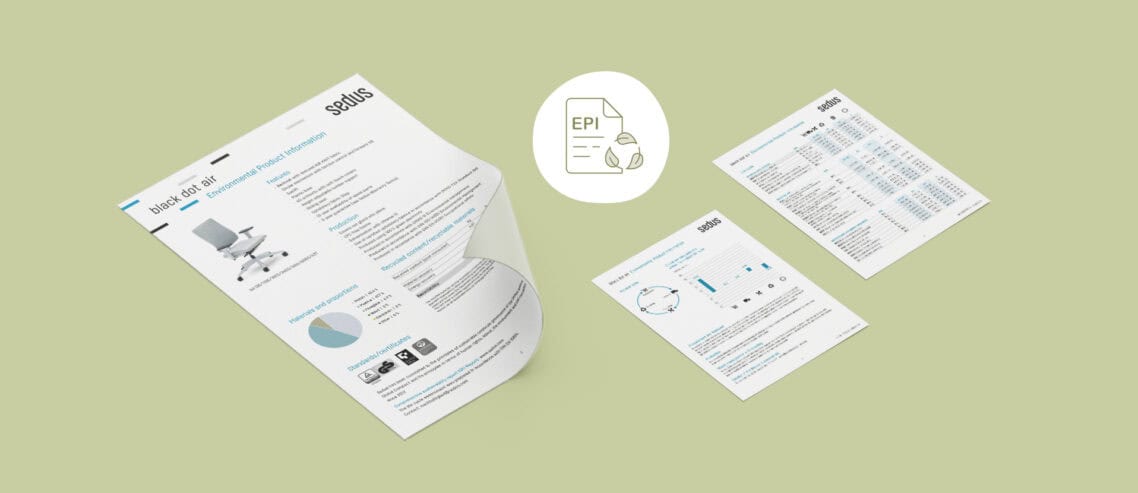What an EPI contains
The EPI provides a comprehensive overview of important ecological information about a product, e.g:
- Equipment features: Design, special features, spare parts and warranty
- Production: details on production and production standards
- Materials: composition and recycled content or recyclability
- Eco-labelling: Certificates and standards
- Declarations: Self-declaration, REACH Regulation and Electrical and Electronic Equipment Act
- Life cycle analysis (LCA): Results of the life cycle assessment (product carbon footprint) with the material cycle phases procurement and transport, production, waste management and recycling
- Contribution to LEED certification: LEED is a system that assesses the environmental compatibility of buildings. The EPI summarises the potential contributions according to the V4.1 standard for various construction projects.
The EPI thus makes it possible to compare different Sedus products in terms of their ecological information.
How an EPI is created
The international standards ISO 14040 and ISO 14044 serve as the basis for the life cycle assessment methodology. The Sedus EPI is based on the European standard DIN EN 15804, which specifies the calculation methodology, scenario creation and impact indicators to ensure standardised publication of life cycle assessment results for construction products at European level. The standard specifies the rules for the preparation of environmental product declarations (EPD). This means that the Sedus EPIs are constructed in the same way and correspond to the EPD in terms of content. The only difference is that the EPIs are not verified by an external organisation.
Many different teams at Sedus are involved in the creation of an EPI and the life cycle assessment of the products, and they work closely together:
- Product Management
- Environment & Sustainability
- Product development
- Data management
- Purchasing
- Graphic
The life cycle assessment of a product is then carried out in the following steps
- Preparation: Product management provides all the information required to configure the product.
- Parts list: The bill of materials is the most important document for the life cycle assessment. The environmental impact resulting from the manufacture of the product (CO₂ emissions) is mainly caused by the use of materials. Each material is converted into CO₂ emissions. The list contains:
- Weight
- Material
- Recyclate content
3. Mapping: The parts list consists of several items and the materials are repeated. Therefore, all items must be analysed and adjusted if necessary.
4. Spreadsheet (material list): In this step, the bill of materials is converted into a simplified material list.
5. Life cycle assessment: The environmental impact can now be calculated using certified software. The life cycle analysis (LCA) takes into account the different life phases of the product. The following phases are of interest for the LCA of Sedus products:
- A1: Raw material supply (purchased parts, source material)
- A2: Transport of materials to the manufacturer (lorry, ship)
- A3: Process data for production (energy consumption, auxiliary materials, packaging)
- C3: Waste treatment for recovery, recycling or reuse
- D: Specify recycling, recovery or reuse potential as a credit
Most emissions are caused by the procurement of materials for the products. The use of sustainable materials, such as recycled materials, and the search for alternative materials can reduce product emissions and indirect emissions from the value chain. Sedus is constantly working to improve its products in terms of their emissions.
social media channels:


